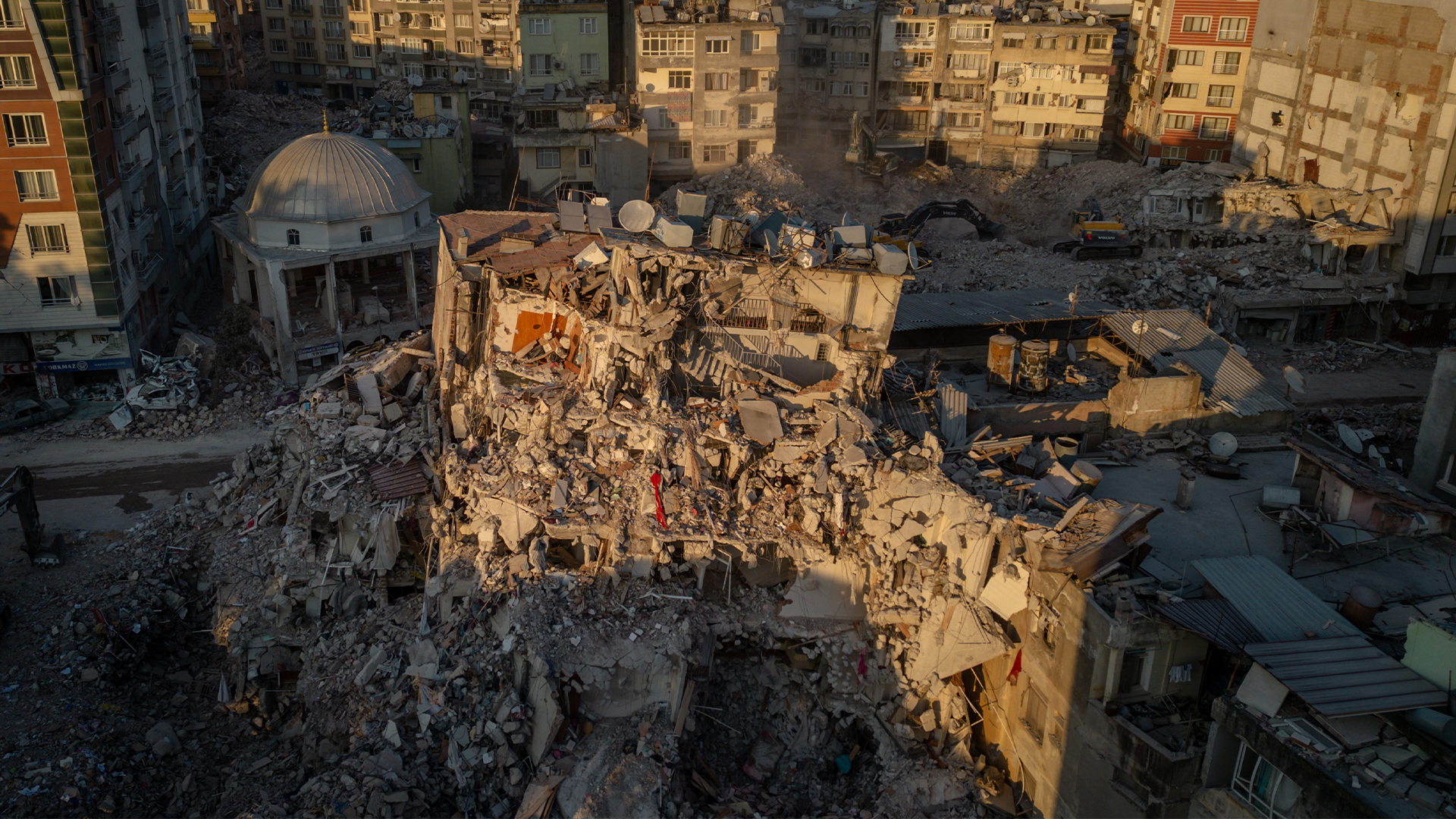Anatolian fault that gave rise to deadly Turkey and Syria quakes formed 5 million years ago
The East Anatolian fault — the source of the earthquake that killed over 59,000 people in Turkey and Syria in February, 2023 — was created when the Eurasian and Arabian plates collided around five million years ago.

The East Anatolian fault, site of a deadly February 2023 earthquake, formed 5 million years ago thanks to the squeeze of the Eurasian and Arabian plates, new research finds.
The creation of the fault cracked the crust from the North Anatolian fault to the Dead Sea fault, breaking the Anatolian plate free from the Eurasian plate — the birth of a new tectonic plate.
The East Anatolian fault spawned a deadly magnitude 7.8 earthquake on Feb. 6, which was followed hours later by a magnitude 7.6 on a different fault branching off the main East Anatolian fault. More than 59,000 people died. While it's impossible to predict earthquakes, a deeper understanding of the fault may help researchers understand which parts of the fault system are vulnerable to future breaks and why, said study first author Donna Whitney, an earth scientist at the University of Minnesota.
Related: The 20 largest recorded earthquakes in history
For instance, the study showed that part of the Arabian plate is stuck under the Anatolian plate. The edge of this stuck chunk of crust is near the fault that broke to create the second earthquake near the Syrian-Turkey border. The strength contrast in the crust caused by that additional layer may have been one reason the earthquake began there, Whitney told Live Science.
"We had no idea it was going to have a big earthquake, absolutely not," she said. "But it makes sense geologically."
Whitney led a team of multidisciplinary Earth scientists in investigating how the Anatolian plate formed. The researchers used a variety of methods to study the area, including seismic surveys, which use earthquake waves or induced vibrations to image the subsurface, and mineral dating to figure out the age of the rocks.
Sign up for the Live Science daily newsletter now
Get the world’s most fascinating discoveries delivered straight to your inbox.
Because faulting allows hot fluids from the mantle to rise to the surface, they can heat the minerals that researchers use to determine the age of rocks, essentially resetting their molecular clocks. Using these strangely young-looking minerals, the research team was able to determine when and where the East Anatolian fault cracked.
"We think that about 5 million years ago, that's when everything connected," Whitney said.
The plate's formation owed to the collision of the Eurasian and Arabian plates, which are pushing into one another slowly. Add in some extension, or stretching, from the Aegean seafloor to the west, and "Anatolia basically had to move west," Whitney said. It's a bit like a watermelon seed slipping out between two fingers, if the Eurasian and Arabia plates are the fingers, and the Anatolian plate is the seed, she said. The researchers reported their findings in the journal Geology.
Since the formation of the plate, earthquake activity has centered around the North Anatolian fault and the East Anatolian fault. The East Anatolian fault frequently gives off moderate-sized quakes, with the largest in recent history before 2023 being a magnitude 6.8 that struck in 2020, according to a paper in the Journal of the Geological Society. In 1939, a quake centered on the North Anatolian fault killed more than 32,000 people, according to The Geological Society, and a magnitude 7.6 quake in 1999 killed more than 17,000.

Stephanie Pappas is a contributing writer for Live Science, covering topics ranging from geoscience to archaeology to the human brain and behavior. She was previously a senior writer for Live Science but is now a freelancer based in Denver, Colorado, and regularly contributes to Scientific American and The Monitor, the monthly magazine of the American Psychological Association. Stephanie received a bachelor's degree in psychology from the University of South Carolina and a graduate certificate in science communication from the University of California, Santa Cruz.









